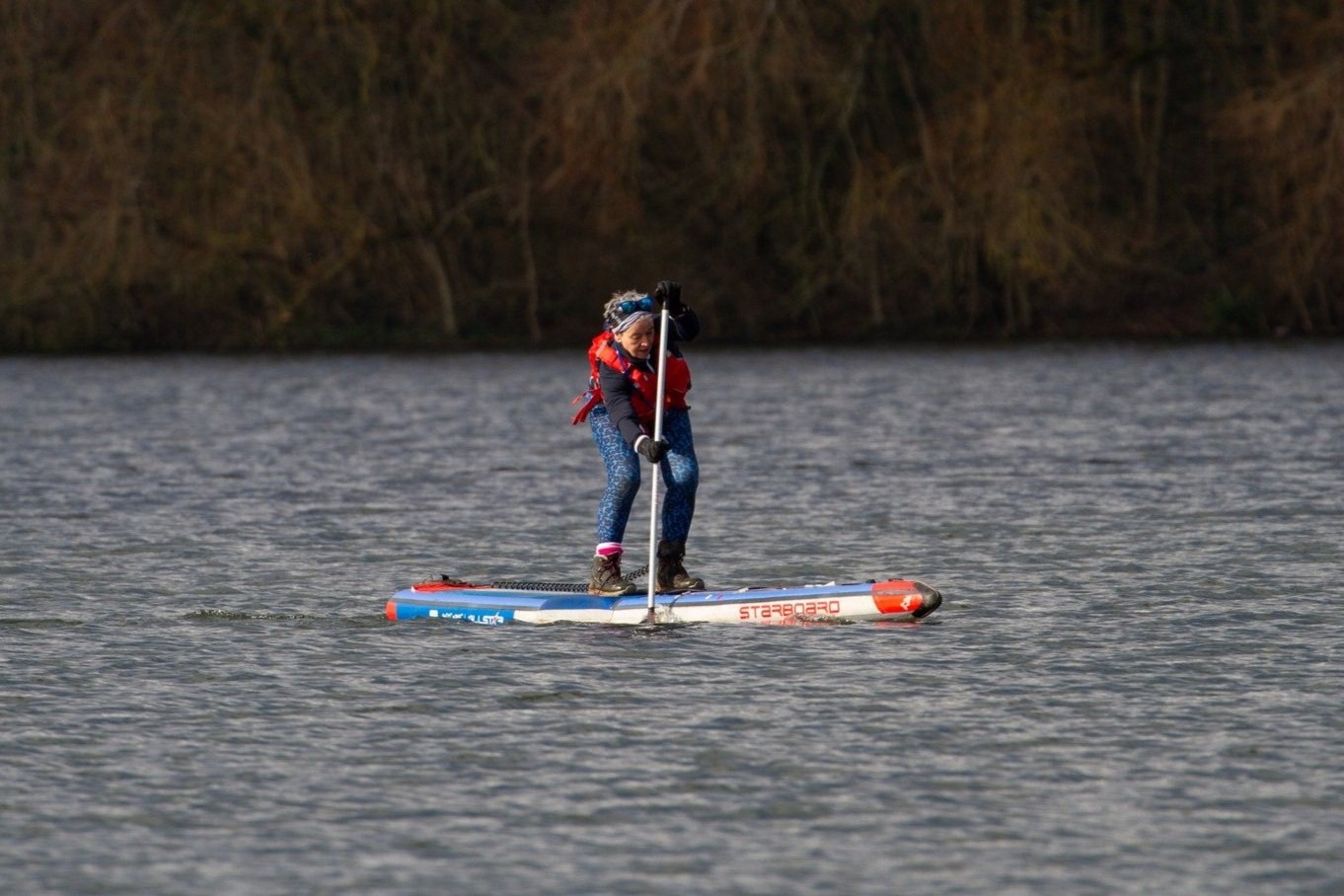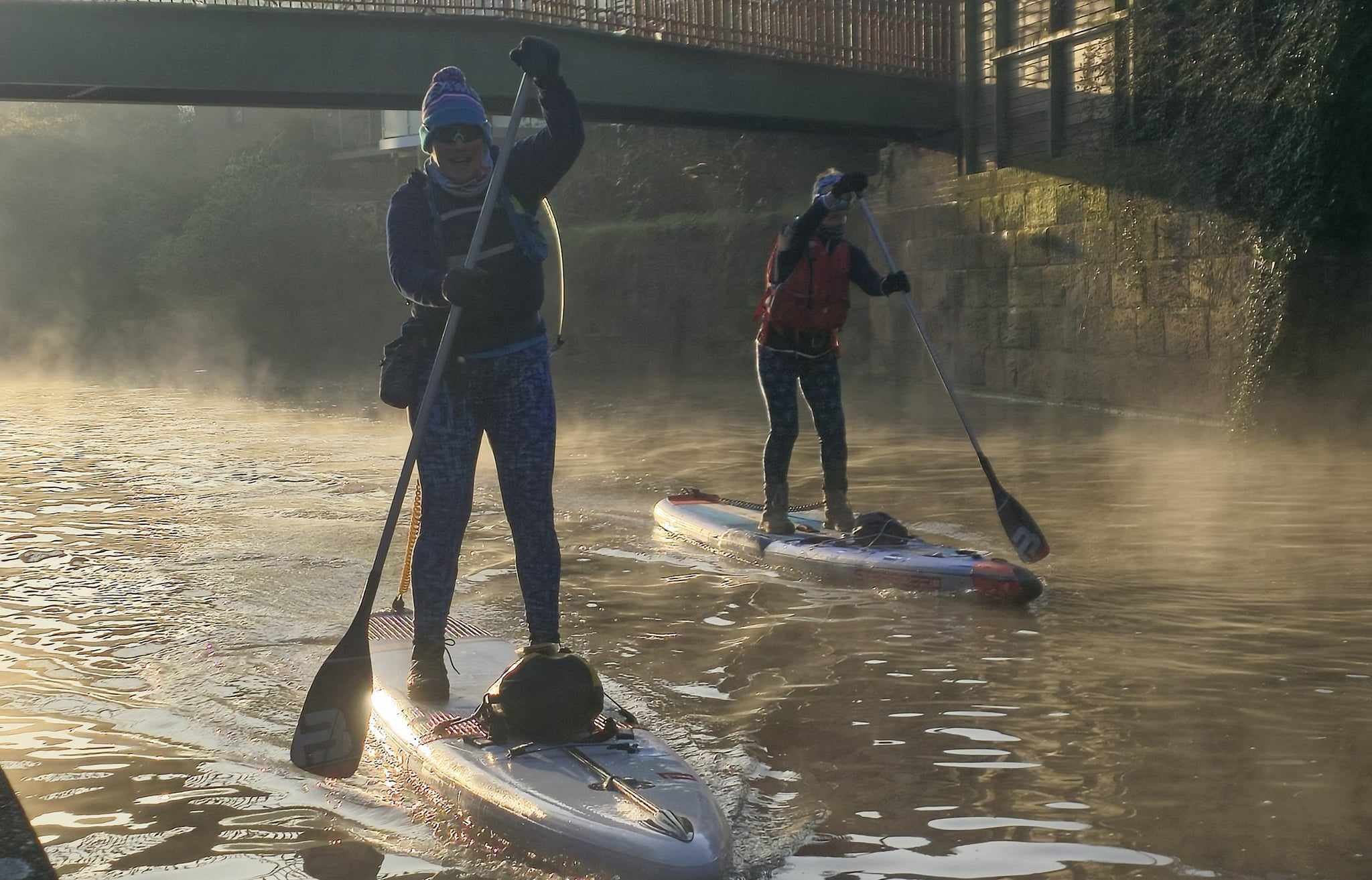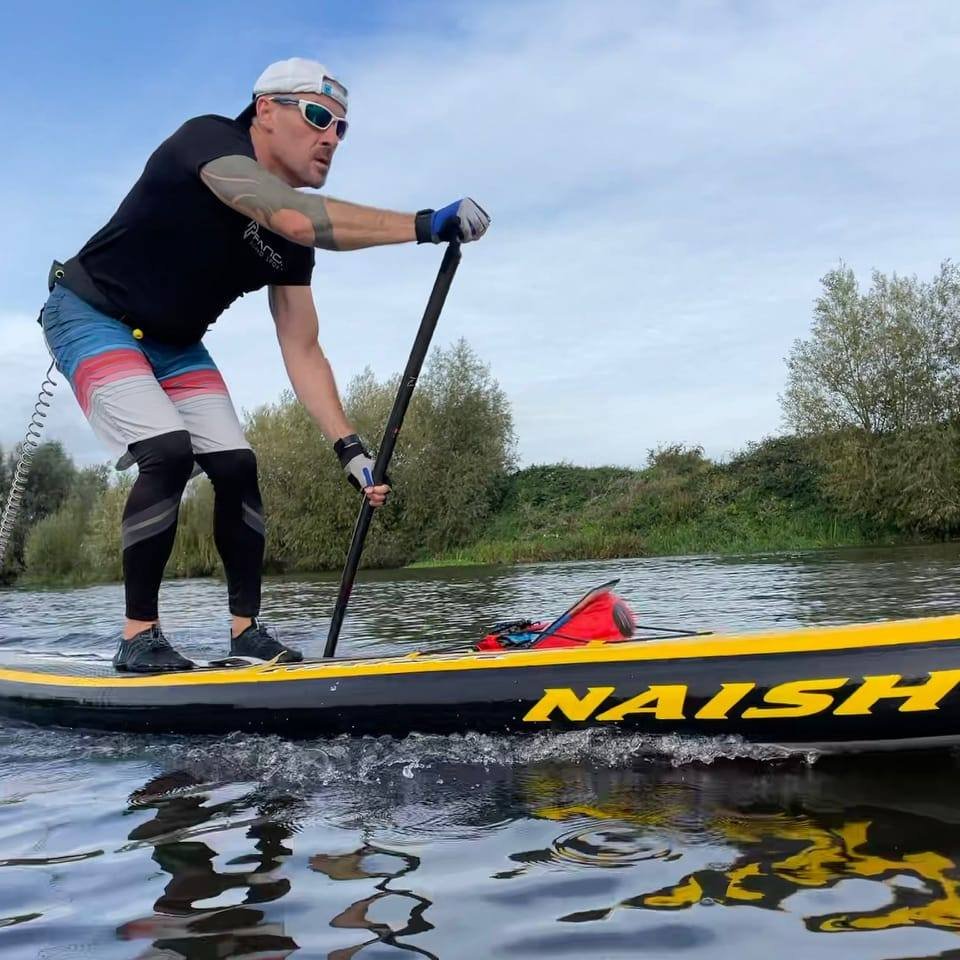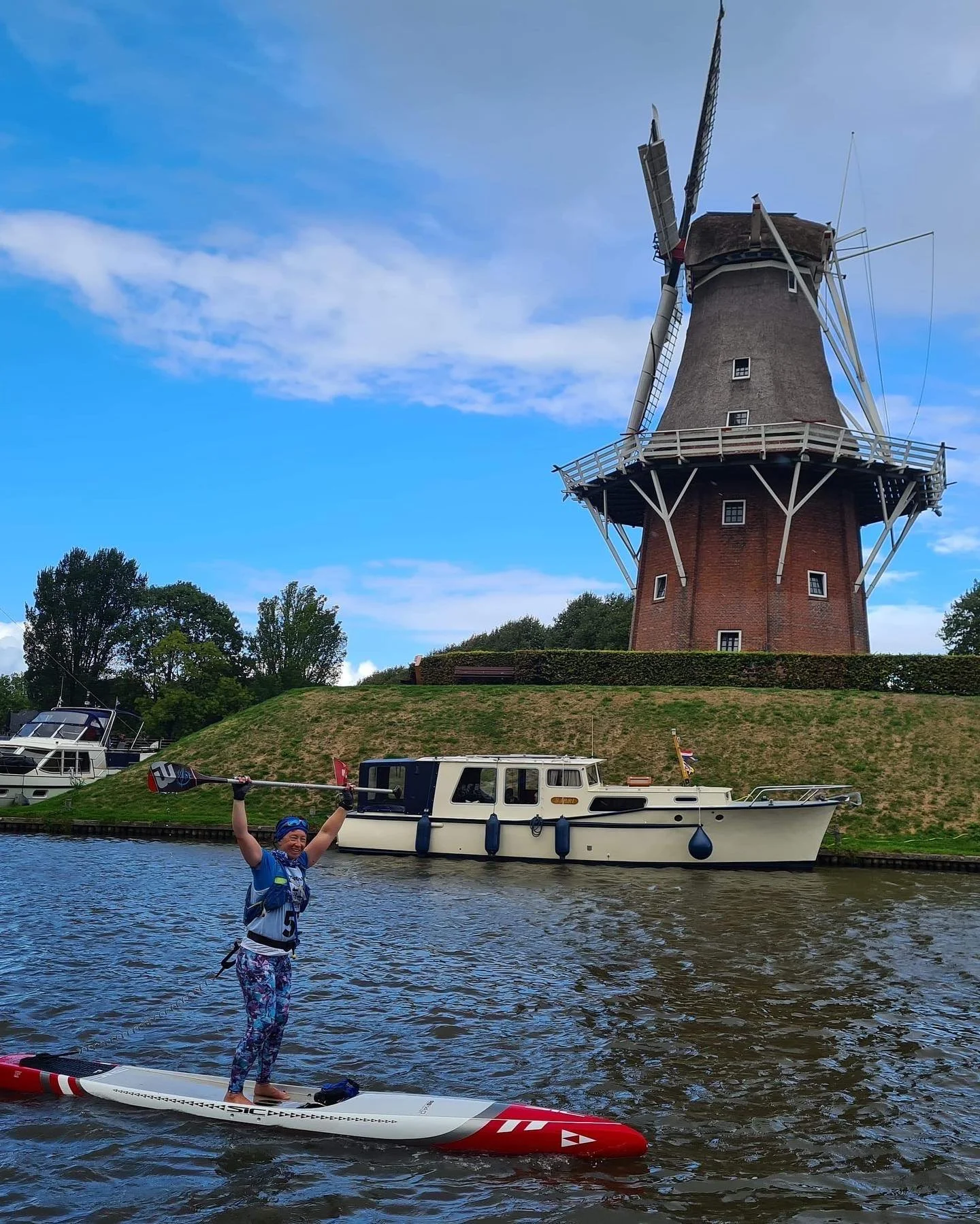What’s in your lunchbox? Adventure and Endurance Nutrition
We love two things here at SUPFitness, long days on the water and food. Lucky for us they go hand in hand, as endurance paddling is an eating game. Whether you’re taking it steady on an adventure or competing at an ultra distance event, your nutrition and hydration is key.
Our everyday food preferences and choices are very individual and that extends to what we choose to fuel ourselves with during a paddle. Here we give you a very loose idea of what your “on board” food could look like and some general guidelines on nutrition. But its totally your choice to figure out what tasty treats are in your lunchbox and works for you.
Calories and Nutritional Content (How much and of what should I be eating?)
You’ll burn through a few hundred calories an hour paddling. It’ll depend on your fitness, weight, gender, technique, speed, weather, how close that swan is behind you and a whole host of other variables. Even the fanciest of fitness watches will only give you ball park figures. So unfortunately when we get asked “how many calories should I eat for this paddle?” It’s a very unhelpful answer of “It depends”.
When a paddle is between 2 - 6 hours in duration we’re in endurance territory. A very generalised recommendation is that every hour you should be consuming around 30-60g of carbohydrates, 5 - 15g of protein and throw some fats in for fun. Totalling around, at least, 180 - 300 kcal, that you need to get into your body every hour. If your paddle is over 6 hours, welcome to ultra endurance, you’re now looking at closer to 90g of carbohydrates, plus a lot more protein and fat per hour.
That’s just a guideline, there will be a big difference in your requirements between racing a paddle and tootling along. That aside, what do those calories look like on your plate? Well, when I tell you what that equates to as ‘real’ food, it will either make you very excited or very queasy.
Examples of 30g of carbs are : a handful of rice/ pasta /breakfast cereal, a banana, or a small bagel.
Examples of 15g of protein are : two hard boiled eggs, three Babybels, or six chicken nuggets.
That’s a lot of Babybels to be knocking back even for our team (that’s not a challenge!). So when you are building your food list for the day there is more to consider than just the numbers.
Palatability and Digestibility (Do you like the taste and will it make you unexpectedly poop?)
Having a bag full of food that you hate will not get eaten. It’s got to be enjoyable and it’s got to be easy to consume. It’s also got to sit well in your stomach. When we exercise our body is busy sending blood to our paddling muscles and tends to neglect supplying our digestive system. So if you eat something that you find hard to digest you’ll end up having a ‘code brown’ (a sudden urge to go to the toilet). This is where a bit of trial and error on a shorter paddle, with toilets near by, is recommended. Sometimes food that we don’t have a problem with in our daily lives can be problematic when we’re fuelling during exercise.
You can help your stomach out by eating little and often rather than trying to having long lunchbreaks. This lightens the load for your stomach, making it less likely to rebel. You’ll find that processed foods and foods that have been cooked will digest quicker. So don’t feel guilty about those cakes and protein bars in your bag.
Liquid Nutrition vs Real Food
A practical way of getting all that fuel into your system is using a “sports drink” powder. Generally they will contain a mix of carbohydrates in the form of sugar and electrolytes (more about those later). Some will also have added proteins and fats. There is huge market in this kind of supplement, and the types of ingredients used vary greatly. Don’t assume that if your were code brown free on one variety that the next one you choose will be just as kind. So make sure you do some trial tests before your big paddles. Gut bombs aside, the big benefit of liquid hydration is that it keeps your hands free. Kind of an important thing when you’re a paddler and chasing down a finish line. They are a convenient an measured way of getting what you need. The downside is that they are generally expensive, very sweet and a bit boring. If you’re taking a long paddle at a more leisurely pace then you’ve got the time to unpeel that banana and rustle through a pack of mini cheddars.
Most of our team use both. With the liquid nutrition providing the bulk of calories and some easy access snacks to top up with.
There are lots of brands to choose from for liquid nutrition. Some of our favourites are Heed by Hammer Nutrition, Veloforte Electrolytes and Fast Release Energy, and Tailwind Endurance Fuel.
Hydration and Electrolytes
Getting the sweet spot with water can be tricky and is potentially dangerous if you under or over drink. When we don’t drink enough water for our bodies to function to the best of its ability we become dehydrated. At just 0.5% of water loss from its usual happy balance can start to impact your paddling, 6% loss and you’re in a world of trouble. There is usually a bit of a lag between dehydration and feeling thirsty. So little and often is key here, just like your food.
You’re aiming for around 500ml an hour, but again this depends on lots of variables just like your food intake. So find what works for you.
At the opposite end of the scale, which endurance and ultra endurance athletes are very susceptible to is, hyponatremia. This is when you drink too much water and haven’t taken in enough sodium (salt). It’s most likely to happen on a hot day when you ran out of water hours ago, you get to the finish line and down a litre bottle of water. The excessive water dilutes the sodium in your blood causing life threatening problems.
To help us find the goldilocks zone for our hydration, electrolyte tablets and salty foods are our friends. By making sure you’re taking in some sodium you will help your hydration levels. It helps make sure that the water you are drinking gets to all the places it needs to be, keeps you safe from overdoing it, and lessens the “its gone straight through me” effect.
If you’re taking a more leisurely pace for the day, pack a flask of hot drink or some juice. These should be an additional treat to your water, rather than your main source of fluids.
From the Experts…
Our team have got hundreds of thousands of km’s under their collective belts. Here are some of their top food picks to keep you paddling longer and stronger.
“ For me it’s all about variety as I find I start craving things, last week it was a sausage roll! So I tend to take small bits and have them little but often to top up my energy levels rather than taking a sandwich. These often include mini soreens, boiled eggs, pepperami, baby bells, small cubes of cheese with things in like mango and ginger, crisps, samosas, sliced chicken breast, some chocolate (I avoid snickers unless I want distracting for the next few hours getting nut bits out of my teeth), grapes, tomatoes, Mr Kiplings individually sliced cakes.
I always have a flask of green tea and plain water in addition to my hydration pack ” - Sam Roberts
“Ritz crackers and babybels (although after a few hours these are a pain to open) boiled eggs, quorn party sausages and salted peanuts. Lots of savoury snacks as the hydration drinks are sweet. I can't stomach anything meaty though. Chocolate milk is the hero as it’s got fluid, energy and protein” - Suzy Rigby (Photo credit Julie Krueger)
“I've just been getting used to using a climbing chalk bag as a quick snack release mechanism. In it I've put mixed nuts, sultanas, chunks of cheese and sour sweets. As I put my hand in, I've no idea what I'm going to eat next! Saves having to make a decision. Hot cross buns with cheese are my current favourite along with banana soreen!” - Theresa Bristow
“For the Wales Ultra, (three days: no fridge) my daily John West tuna pasta salad made me feel like I had a “proper lunch”, they do not need to go in the fridge hence worked on a multi day trip. I’m not going to lie I wouldn’t normally eat them and had to try different flavours to find one that didn’t repeat on me! But for what I wanted from them (no mould with no fridge) they were great. As they have moisture in them they didn’t make me feel dehydrated. My other favourite at was my big bag of peanut M and Ms. Melt in the mouth not in the hand with a mix of quick and slow burn energy” - Stic Thacker
“Sorren bars, flapjack's , beef jerky, apple's. Stuff that ain't going to get bruised in the bag. Nothing worse than a bruised sorry looking banana.
To drink, Hammer Nutritions Heed and Isotonic drink . Plus back up water.” - Dave Scott
“I've tried lots of things and for me it's 100/ 120 cal every hour on the hour. Mostly fat or protein as I take in carbs through my Hammer Nutrition Heed solution in water, so I don't "fancy" sweet stuff. I drink around 650ml - 1 litre of water an hour depending on the intensity of the paddle.
Its a skill to keep on top of fuel and hydration. I find you have to “train” it every paddle, adventure and challenge.
You have to to practice eating on the go, and you have to train your gut on different foods. What works for some, won't work for all.
Adventure and endurance paddling is an eating game.
It's important to regularly hydrate too, especially in the cooler months when you may not "feel thirsty".
I will take a big sip every 10min or 1km which every comes first, this ensures I'm continually taking in water and my carbs.
For me my snacks are cheese, meats and nuts.
I do like some mixed ginger, helps to refresh mouth and settles tummy too.
Eating little, often and regular works for me. If I was to eat a big sarnie at lunch time I'd crash and wouldn't be able to paddle well in the afternoon.” - Cassie Salter
“I tend to have Hammer Nutrition Heed and water in my pfd, then in one pocket I have a Clif Bloks energy bar and bag of nuts. In the other pocket I have a PB sandwich or bagel cut into quarters. That way every hour I have easy to hand some carbs, protein, fat or sugar depending on what my body is craving. Then in my bag I have backups of all of that and a lunch box to sit and pick at filled with random selection of cheese cubes, tangerine slices, chicken or mini sausages.” - Tracy Higgs
“For short adventures: -Banana soreen definitely, Trek protein flapjack (white chocolate and raspberry ), deliciously Ella peanut butter oat bar, fruit - satsumas, grapes, mixed nuts, cheese sandwich! For long adventures, the wayfarer meals (ration packs) but depends if you like them cold or not!” -Emma Adams
Eat, Drink, Paddle, Repeat
Have fun experimenting with what foods work for you and remember to also eat plenty the few days leading up to your paddle and after. Enjoy!







